If you’re enthralled by the mysteries of the underwater realm and seeking to infuse your aquarium with excitement, why not consider introducing freshwater sharks to your collection? These extraordinary and mesmerizing creatures have the power to inject a sense of wonder and thrill into your aquatic environment. In this comprehensive guide, we will explore 10 captivating species of freshwater sharks that are perfectly suited for aquariums. So, let’s embark on this adventure and uncover the secrets of these astonishing creatures!

1. Bala Shark
| Optimum Temperature | 72°F to 82°F (22°C to 28°C) |
| Maximum Size | Up to 14 inches (35 cm) |
| Recommended pH Range | 6.0 to 8.0 |
| Diet | Flakes, pellets, live and frozen foods |
The Bala Shark (Balantiocheilos melanopterus) is a magnificent species renowned for its silver body and elongated form, reminiscent of a miniature shark. This peaceful fish thrives in schools and necessitates a spacious tank with ample swimming space. The Bala Shark proves to be an excellent choice for larger aquariums.
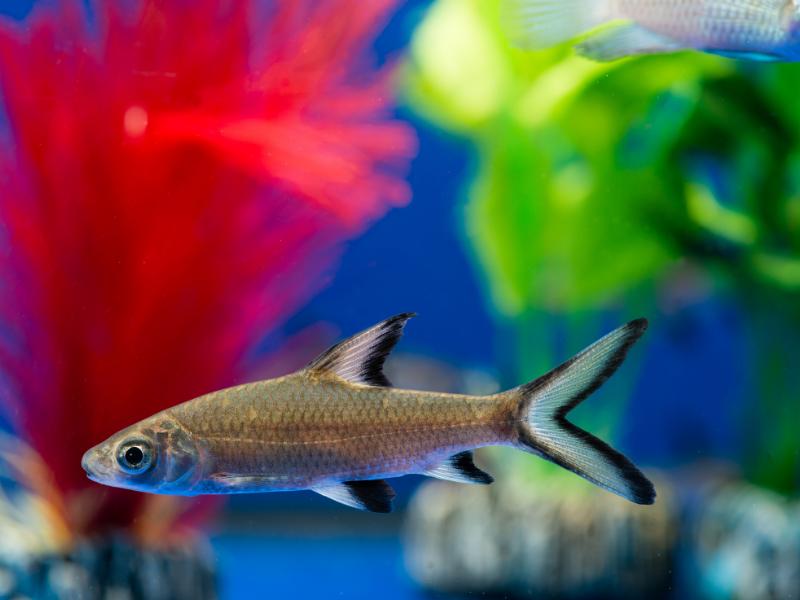
2. Red-tailed black shark
| Optimum Temperature | 72°F to 79°F (22°C to 26°C) |
| Maximum Size | Up to 6 inches (15 cm) |
| Recommended pH Range | 6.5 to 7.5 |
| Diet | Pellets, flakes, and small live or frozen foods |
The Red-tailed Black Shark (Epalzeorhynchos bicolor) showcases a striking appearance with its vibrant red tail fin, adding a burst of color to any aquarium. This territorial shark species thrives in a well-structured tank with suitable hiding places. It is crucial to provide ample space for the Redtail Shark to explore and establish its territory.

Related: How to Play with Pet Fish
3. Rainbow Shark
| Optimum Temperature | 75°F to 81°F (24°C to 27°C) |
| Maximum Size | Up to 6 inches (15 cm) |
| Recommended pH Range | 6.5 to 7.5 |
| Diet | Algae wafers, flakes, pellets, and small live or frozen foods |
The Rainbow Shark (Epalzeorhynchos frenatum) is another captivating species, characterized by its dark body and vibrant red fins. This territorial fish thrives in the presence of caves and hiding spots within the tank. It is advisable to keep Rainbow Sharks individually or in small groups to prevent aggression between individuals of the same species.
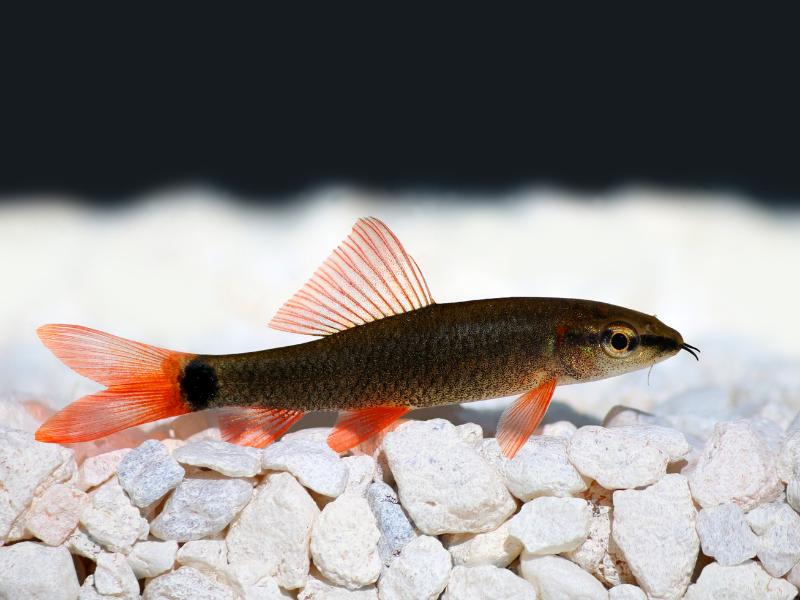
4. Iridescent Shark
| Optimum Temperature | 72°F to 77°F (22°C to 25°C) |
| Maximum Size | Up to 48 inches (122 cm) |
| Recommended pH Range | 6.5 to 7.5 |
| Diet | Pellets, flakes, small live or frozen foods, and occasional meaty treats |
The Iridescent Shark, scientifically known as Pangasianodon hypophthalmus, is a popular large freshwater species known for its beautiful iridescent scales that create a shimmering effect. This species has the potential to grow to considerable lengths, and therefore it requires a spacious aquarium with ample room for swimming. It is important to note that the Iridescent Shark needs strong filtration and a well-maintained tank due to its size.
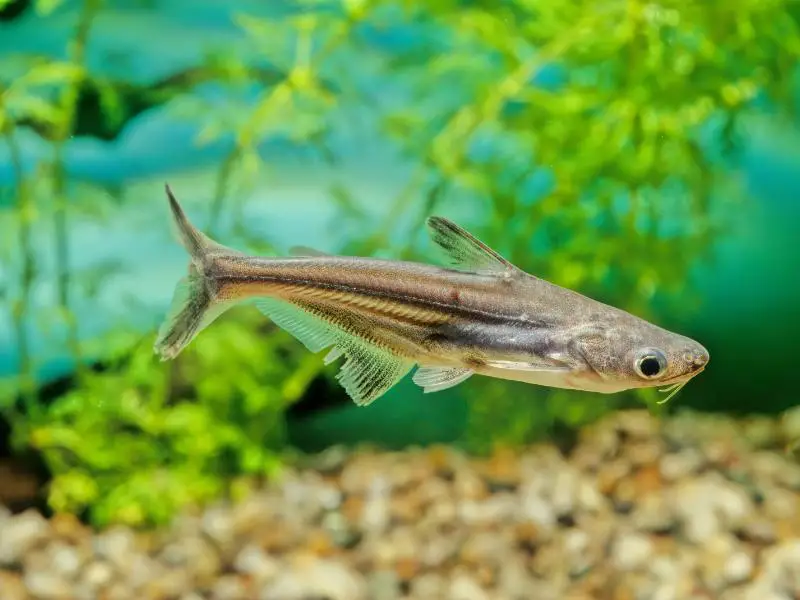
Related: What Do Pet Sharks Eat? All Pet Species
5. Silver Apollo Shark
| Optimum Temperature | 73°F to 79°F (23°C to 26°C) |
| Maximum Size | Up to 4 inches (10 cm) |
| Recommended pH Range | 6.5 to 7.5 |
| Diet | Flakes, pellets, frozen or live foods, and occasional vegetable matter |
The Silver Apollo Shark (Luciosoma setigerum) stands out with its visually stunning silver body and prominent dorsal fin. This peaceful and resilient fish adapts well to various water conditions. The Silver Apollo Shark proves to be an excellent choice for beginners or aquarium enthusiasts with limited space.
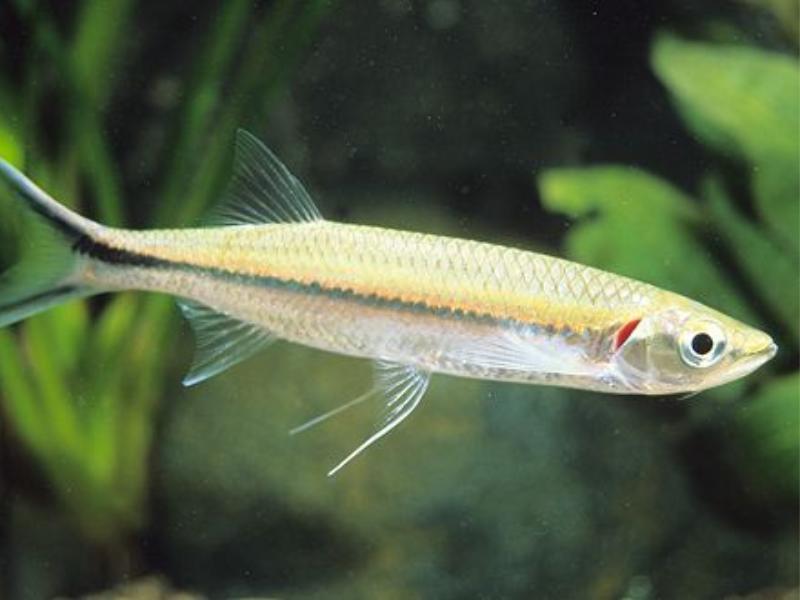
credit: Aquarists Across Canada
6. Columbian Shark
| Optimum Temperature | 75°F to 82°F (24°C to 28°C) |
| Maximum Size | Up to 24 inches (61 cm) |
| Recommended pH Range | 6.0 to 7.5 |
| Diet | Pellets, flakes, live or frozen foods, and occasional meaty treats |
The Columbian Shark (Ariopsis seemanni) boasts a distinctive elongated body and sleek appearance. This nocturnal species requires a spacious tank with ample swimming area. It prefers dim lighting and finds solace in caves or beneath driftwood during the day.
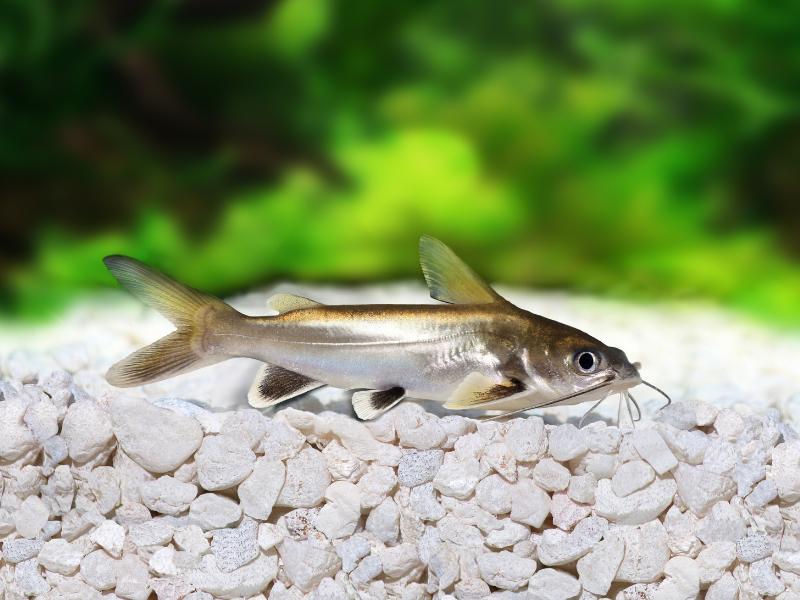
Related: How Much Does it Cost to Pet a Shark?
7. Black Shark Minnow
| Optimum Temperature | 73°F to 79°F (23°C to 26°C) |
| Maximum Size | Up to 8 inches (20 cm) |
| Recommended pH Range | 6.5 to 7.5 |
| Diet | Pellets, flakes, live or frozen foods, and occasional vegetable matter |
The Black Shark Minnow (Labeo chrysophekadion) captivates with its visually stunning black body and contrasting red tail fin. This active fish thrives in a spacious tank that provides ample room for swimming. The Black Shark Minnow prefers the company of its own kind, so it’s best to keep them in groups of five or more.
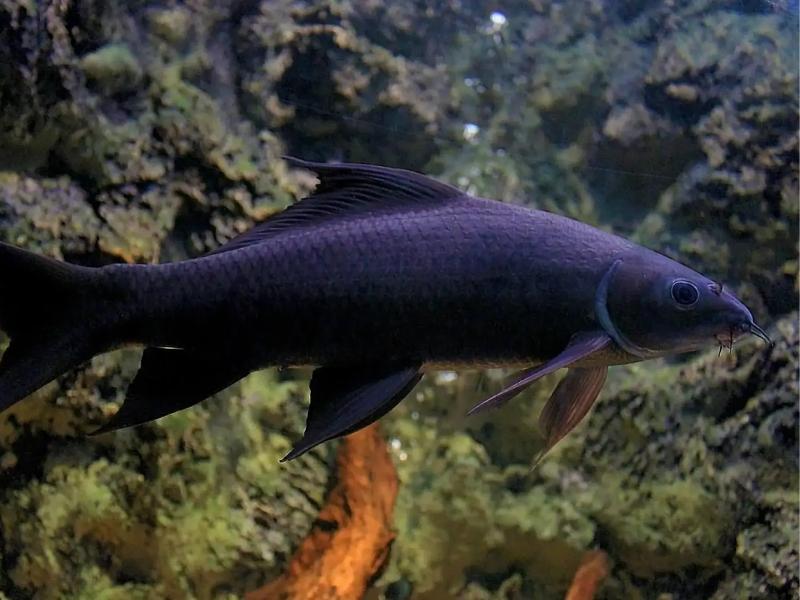
credit: Aquadiction
8. Albino Rainbow Shark
| Optimum Temperature | 75°F to 81°F (24°C to 27°C) |
| Maximum Size | Up to 6 inches (15 cm) |
| Recommended pH Range | 6.5 to 7.5 |
| Diet | Algae wafers, flakes, pellets, and small live or frozen foods |
The Albino Rainbow Shark (Epalzeorhynchos frenatum var. albino) is a unique variation of the Rainbow Shark. Its distinctive albino coloration ensures it stands out in any aquarium. Similar to its counterpart, the Albino Rainbow Shark thrives when provided with ample hiding places within the tank.
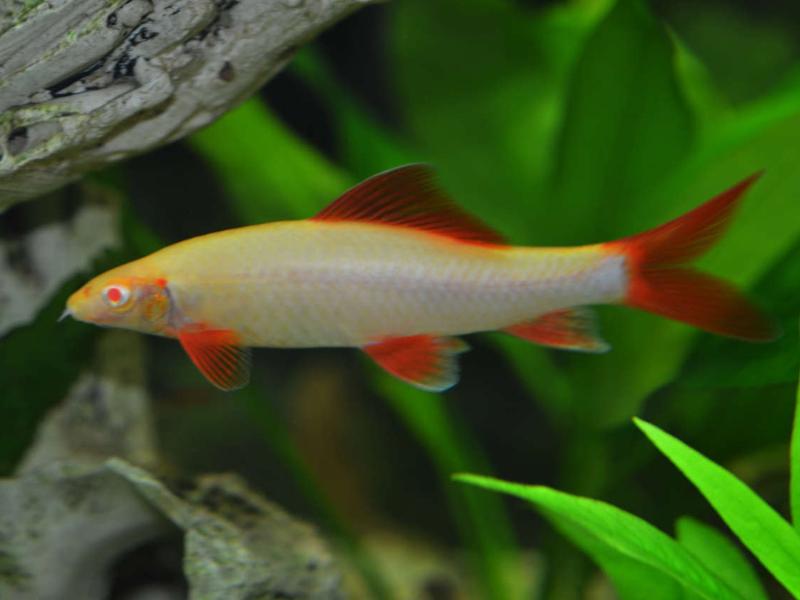
credit: Aqua Heaven
Related: Are Sharks Suitable for Fish Tanks? Best Choices
9. Dwarf Red-Fin Shark
| Optimum Temperature | 72°F to 79°F (22°C to 26°C) |
| Maximum Size | Up to 4 inches (10 cm) |
| Recommended pH Range | 6.5 to 7.5 |
| Diet | Pellets, flakes, and small live or frozen foods |
The Dwarf Red-Fin Shark, also known as Epalzeorhynchos bicolor var. mini, is a compact version of the Redtail Shark. It features the same vibrant red tail fin that distinguishes its larger counterpart. This makes the Dwarf Red-Fin Shark a fantastic option for smaller aquariums or community tanks.

10. Harlequin Shark
| Optimum Temperature | 74°F to 80°F (23°C to 27°C) |
| Maximum Size | Up to 6 inches (15 cm) |
| Recommended pH Range | 6.5 to 7.5 |
| Diet | Flakes, pellets, small live or frozen foods, and occasional vegetable matter |
The Harlequin Shark, scientifically named Labeo cyclorhynchus, showcases a mesmerizing combination of black and orange markings, creating an eye-catching pattern. This species is known for its peaceful nature and ability to thrive in diverse water conditions. As a result, the Harlequin Shark is an excellent choice for community aquariums.
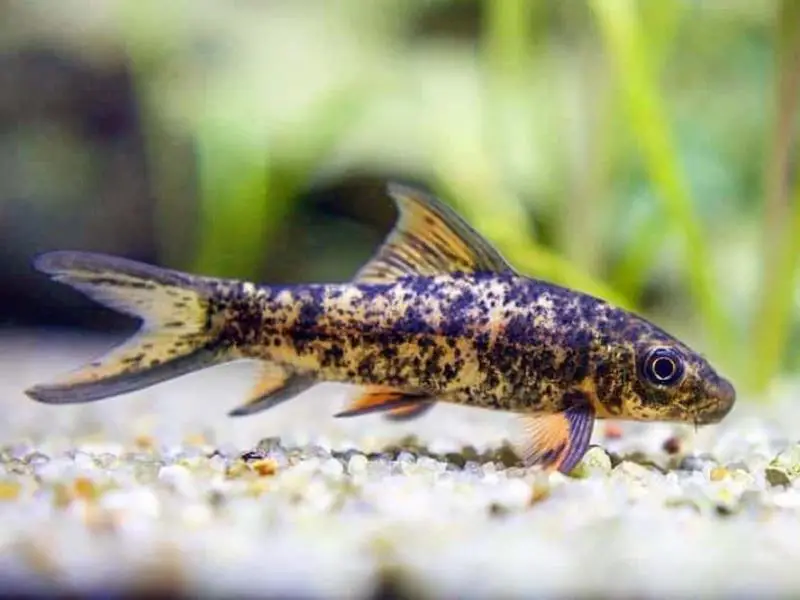
credit: Build Your Aquarium
Adding Freshwater Sharks to Your Aquarium: Conclusion
Introducing freshwater sharks to your aquarium adds an element of excitement and wonder, allowing you to witness the beauty and grace of these unique species up close. When considering the addition of freshwater sharks to your aquatic environment, it is crucial to ensure the tank size is suitable, provide adequate hiding spots, and select compatible tank mates. Taking into account the specific care requirements of each species is vital to maintain their health and overall well-being.
FAQs (Frequently Asked Questions)
Yes, many freshwater sharks can coexist peacefully with other fish. However, it is crucial to select compatible tank mates and provide sufficient space and hiding places.
Each species of freshwater shark may have distinct water condition preferences. It is essential to conduct thorough research and replicate their natural habitat as closely as possible.
The ideal tank size varies depending on the specific species. Larger species like the Bala Shark and Iridescent Shark require more spacious tanks, while smaller species can thrive in smaller setups.
Some species, such as the Rainbow Shark, can display territorial aggression towards their own kind. It is advisable to keep them individually or in small groups to avoid conflicts.
It is possible to keep multiple species of freshwater sharks together if their care requirements and temperaments align. However, careful consideration must be given to tank size, compatibility, and aggression levels.
